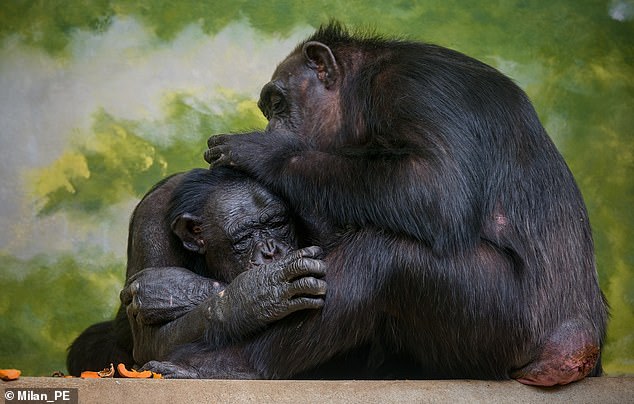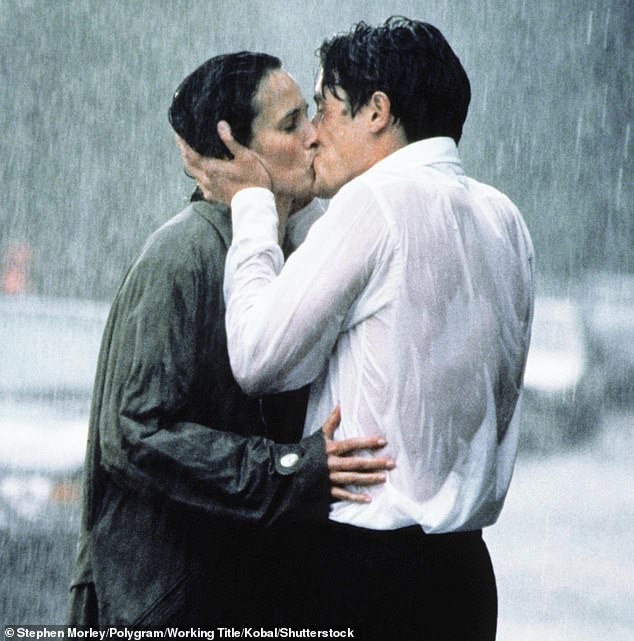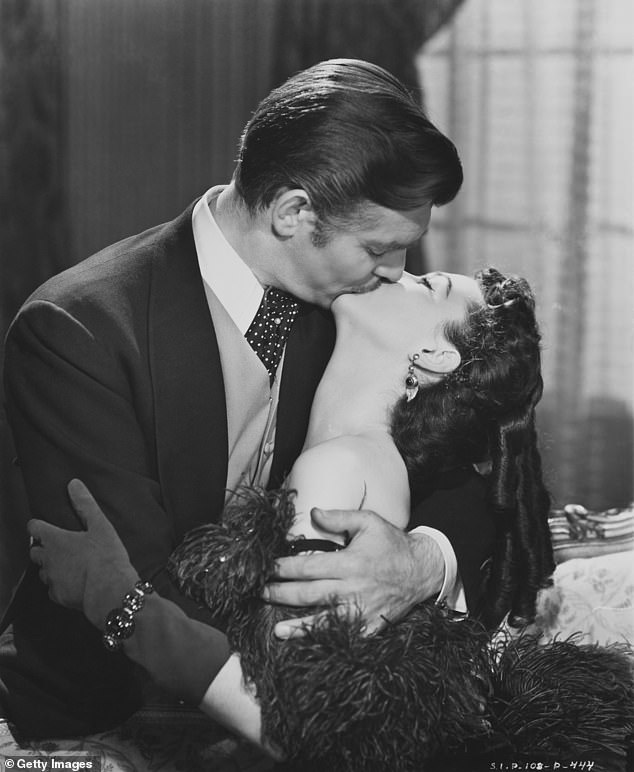Scientists discover where KISSING came from – and it will make your skin crawl
It’s one of the most primitive human drives, but why exactly we kiss has intrigued scientists for centuries.
Now a researcher has a new theory — and it might make you rethink a hug.
Professor Adriano Lameira, an evolutionary psychologist at Warwick University, claims that kissing originated with our furry human ancestors millions of years ago.
Very light sucking with pursed lips was once a clever technique to remove tics and lice from each other’s fur, he argues.
Only a few million years ago did it begin to have sexual connotations and become an act that preceded mating.
Other theories about why we kiss range from hardening our immune systems through the exchange of bacteria, to a form of ‘sniffing’ for social inspection.
But this hypothesis – known as ‘the groomer’s last kiss’ – adds a new evolutionary origin to human kissing, which has been depicted on the big screen for more than 100 years.
Pictured: Princess Leia (Carrie Fisher) and Han Solo (Harrison Ford) sharing a kiss in ‘The Empire Strikes Back’ (1980)

Humans are apes, and our closest living relatives include gorillas and chimpanzees (pictured)
In his new study, published in Evolutionary anthropologyProfessor Lameira (@lameira_adriano) says the kiss is a remnant of our evolutionary past.
Millions of years ago, a gentle sucking motion with lips extended would have been an essential form of care to remove parasites, dead skin cells and dirt.
Professor Lameira believes that this unique session between our furry ancestors would have taken place all over the body and ended with mouth-to-mouth contact.
Very gradually, as our ancestors evolved and became less and less hairy, these grooming sessions would have become shorter, but they would always have ended with mouth-to-mouth resuscitation.
Eventually, the overall grooming session died out, but the final stage of oral contact remained: it became what we know as the kiss.
He says in his article: ‘The hygienic relevance of grooming has decreased over the course of human evolution due to the loss of fur.
“But shorter sessions would predictably have retained a final ‘kissing’ phase, ultimately leaving all that remains of a once-ritual behavior for signaling and strengthening social and kinship bonds in an ancestral ape.”
Professor Lameira estimates that our ancestors developed the fur-sucking technique about seven million years ago, when they moved from trees to the ground.

Today, kissing has a multitude of uses, including as a sign of romantic and sexual attraction, often depicted in films. Pictured: Hugh Grant and Andie MacDowell in ‘Four Weddings and a Funeral’ (1994)
‘This made care important for hygienic purposes, given the high parasitic load on the ground,’ Professor Lameira told MailOnline.
Our ancestors then became ‘kissing monkeys’ about 2 to 4 million years ago, when they lost all their fur.
More recently, the earliest evidence of kissing appears in texts written around 2500 BC in Mesopotamia, the ancient region in the eastern Mediterranean.
All modern forms of kissing have evolved from lice removal techniques, argues Professor Lameira – from a simple kiss on the cheek as a greeting to a religious blessing on the hand or head.
It also explains what is perhaps one of the most important functions of the kiss, which is often depicted in films.
The kiss on the lips to indicate erotic or sexual desire between romantic partners was called the ‘savium’ by the Romans.
But the exact reason why kissing took on a sexual connotation “remains more speculative,” the academic adds.
Furthermore, further research may be needed to explain the close link between the desire to kiss and the urge to have sex.

Today, kissing has a multitude of uses, including as a sign of romantic and sexual attraction, often depicted in films. Pictured: Rhett Butler (Clark Gable) and Scarlett O’Hara (Vivien Leigh) in ‘Gone with the Wind’ (1939)
‘Kissing with sexual intent is just a special case of much more general behaviour,’ Professor Lameira told MailOnline.
“It was not until kissing was used as a general convention to show affection that kissing could become a mutual mouth-to-mouth act.”
No other member of the animal kingdom is known to sexually kiss the way humans do, by extending the lips and performing a light sucking motion.
Professor Lameira concludes that the kiss ‘has turned into a crystallized symbol of trust and connection’.
“Few natural human signals carry the symbolism and social sanctions of kissing,” he says.
‘There is some evidence that kissing is not a derivative signal of affection in humans.
“It instead represents a surviving decentralized, rudimentary form of primate care that has retained its ancestral form, context and function.”
